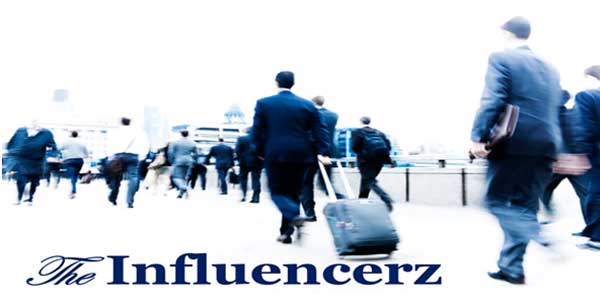Making a viral campaign leans more toward creativity than strict rules, but marketing agencies in San Diego follow specific steps to increase the chances of content going viral. The goal of a viral campaign is to reach as many people as possible and engage them in a way that prompts them to share content, thus expanding its reach organically. Here’s an insightful look into how marketing professionals craft these powerful campaigns.
1. Understanding the Audience
The foundation of any successful viral campaign is a deep understanding of the target audience. Creating content that resonates without knowing who you are trying to reach becomes a guessing game. Marketing agencies in San Diego start by conducting thorough audience research. This includes demographic analysis (age, location, gender, etc.) and psychographic data that examines the audience’s values, interests, and behaviors. Understanding the audience’s pain points, desires, and the type of content they engage with is essential.
By understanding the emotional triggers of the target audience, agencies can craft messages that evoke a strong emotional response. Whether it’s a sense of joy, shock, inspiration, or even humor, tapping into the audience’s emotions increases the likelihood that they will share the content.
2. Crafting Compelling Content
At the heart of any viral campaign is the content itself. Viral content has to stand out in a world where millions of posts, videos, and articles are published daily. Digital marketing agencies in San Diego are skilled at crafting content that is not only high-quality but also uniquely engaging.
The content must also be easy to digest. People scroll through their social media feeds quickly, and you have only a few seconds to capture their attention. This is why content designed for viral campaigns is typically concise, visually appealing, and gets the message across instantly.
3. Timing and Context
A well-timed campaign can ride the wave of a trending topic or cultural event, giving it a massive head start in visibility. Marketing agencies in San Diego closely monitor social trends, current events, and even seasonal themes to launch their campaigns at the perfect moment. A campaign that aligns with a popular cultural conversation or event has a much better chance of catching fire.
Context is just as important as timing. The content should be relevant to the cultural moment it’s tapping into. A campaign may fall flat if it feels forced or disconnected from what’s happening in the world. That’s why marketing agencies carefully choose the right moment and context to release their content, increasing its chances of being shared by an audience engaged in similar conversations.
4. Optimizing for Each Platform
Each social media platform has its own rules of engagement and audience behavior. A campaign that performs well on TikTok might not have the same impact on LinkedIn or Twitter. Marketing firms in San Diego are adept at tailoring content to fit the specific platform it’s intended for. They ensure the content format, length, and tone align with the best practices for each platform.
Agencies also consider each platform’s technical aspects, such as recommended video length, optimal posting times, and hashtag strategies. These small adjustments can significantly impact a campaign’s reach and engagement rate.
5. Leveraging Influencers
Influencers have become essential for expanding the reach of viral content. These individuals, with their large and loyal followings, have the power to introduce your campaign to a wider audience quickly. Marketing companies in San Diego often collaborate with influencers with the right audience demographics and interests that align with the campaign’s goals.
Choosing the right influencers is important—those who genuinely resonate with the brand and have an authentic relationship with their followers. While mega-influencers with millions of followers can boost a campaign, micro-influencers (those with smaller but more engaged followings) can also be highly effective because their content often feels more relatable and trustworthy.
6. Engagement and Interaction
Simply posting content isn’t enough—digital marketing agencies in San Diego actively engage with the audience by responding to comments, liking posts, and sharing user-generated content. Encouraging conversation around the campaign helps maintain momentum and keeps the content alive in the digital space.
Agencies also encourage user participation through challenges, polls, or contests. For example, a viral campaign might ask users to create versions of a popular meme or challenge them to complete a task that ties into the brand’s messaging. This increases engagement and generates additional content from users, multiplying the reach organically.
7. Analyzing and Adapting
Finally, the most successful viral campaigns remain flexible and data-driven. Even after a campaign is launched, marketing firms in San Diego continuously monitor its performance to assess what’s working and what’s not. They track metrics like shares, engagement rates, click-through rates, and audience feedback to identify which aspects of the campaign are driving the most results.
If a campaign isn’t performing as expected, agencies adapt quickly. This could involve tweaking the messaging, adjusting the visuals, or shifting the platform’s focus. By staying agile and responsive to the audience’s needs and preferences, marketing agencies ensure that the campaign maintains momentum and reaches its full viral potential.
Conclusion
Marketing agencies in San Diego utilize a combination of these tactics to craft campaigns that captivate audiences and encourage sharing on a massive scale. While virality can never be guaranteed, the careful planning and execution of these steps significantly increase the chances of a campaign becoming a viral hit. Discover how 62Above can help you reach a wider audience and drive engagement


![Understanding Data Warehousing: A Beginner’s Guide [2025 Edition] Data Warehousing A Beginner's Guide](https://theinfluencerz.com/wp-content/uploads/2024/12/Data-Warehousing-A-Beginners-Guide.webp)




